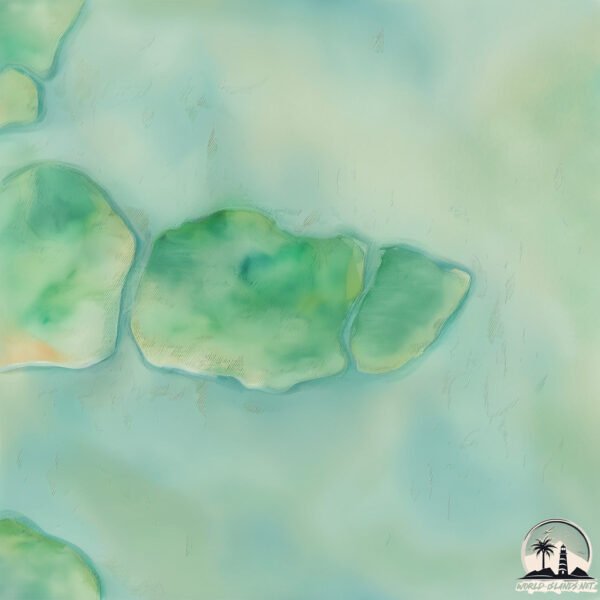Welcome to Isla Cangrejo , a Tropical island in the North Atlantic Ocean, part of the majestic Atlantic Ocean. This guide offers a comprehensive overview of what makes Isla Cangrejo unique – from its geography and climate to its population, infrastructure, and beyond. Dive into the details:
Geography and size of Isla Cangrejo
Size: 41.3 km²Coastline: 35 kmOcean: Atlantic OceanSea: North Atlantic OceanContinent: South America
Isla Cangrejo is a Medium Island spanning 41 km² with a coastline of 35 km.
Archipel: –
Tectonic Plate: South America – A major plate covering the South American continent and part of the Atlantic Ocean, known for the Andes mountain range and significant seismic and volcanic activity.
The geographic heart of the island is pinpointed at these coordinates:
Climate and weather of Isla Cangrejo
Climate Zone: TropicalClimate Details: Tropical Rainforest ClimateTemperature: Hot
Climate Characteristics: This climate is typified by heavy rainfall throughout the year, high humidity, and consistently high temperatures, leading to lush rainforests and rich biodiversity. Seasonal temperature variations are minimal.
Topography and nature of Isla Cangrejo
Timezone: UTC-04:30Timezone places: America/CaracasMax. Elevation: 34 m Mean Elevation: 22 mVegetation: Evergreen Broadleaf ForestTree Coverage: 94%
The mean elevation is 22 m. The highest elevation on the island reaches approximately 34 meters above sea level. The island is characterized by Plains: Flat, low-lying lands characterized by a maximum elevation of up to 200 meters. On islands, plains are typically coastal lowlands or central flat areas.
Dominating Vegetation: Evergreen Broadleaf Forest
Vegetation: 5 vegetation zones – Highly Diverse Island
Infrastructure and Travelling to Isla Cangrejo
Does the island have a public airport? no .
Does the island have a major port? no .
The mean population of Isla Cangrejo is 12 per km². Isla Cangrejo is Gently Populated. The island belongs to Venezuela .
Continuing your journey, Isla Pagayo is the next notable island, situated merely km away.
TENERIFE | Charco de Isla Cangrejo [Santiago del Teide]
Enjoy and join us on our visit to the Charco de Isla Cangrejo, in Santiago del Teide. Wonderful natural pool with the cliffs of Los ...
TENERIFE | Charco de Isla Cangrejo [Santiago del Teide]
Natural Pool
2021 | Walking Tour [4K]
Enjoy and join us on our visit to the Charco de Isla Cangrejo, in ...
Enjoy and join us on our visit to the Charco de Isla Cangrejo, in Santiago del Teide. Wonderful natural pool with the cliffs of Los ...
The Island of the Crab (La Isla del Cangrejo - Crab Island) - Complete movie in English 2000
The movie "The Island of the Crab (La Isla del Cangrejo - Crab ...
The movie "The Island of the Crab (La Isla del Cangrejo - Crab Island)" distributed on DVD by Filmax Home Video in 2001.
Crab Island in Destin, Florida
Welcome to the beautiful Crab Island! If you've ever made the trip to ...
Welcome to the beautiful Crab Island! If you've ever made the trip to the Emerald Coast, Destin specifically, there's a great chance ...
Venezuela is classified as Emerging region: G20: Group of Twenty – Major economies comprising both developed and emerging countries, representing the world’s largest economies. The level of income is Upper middle income.
News – Latest Updates and Headlines from Isla Cangrejo
Stay informed with the most recent news and important headlines from Isla Cangrejo. Here’s a roundup of the latest developments.
Please note: The data used here has been primarily extracted from satellite readings. Deviations from exact values may occur, particularly regarding the height of elevations and population density. Land area and coastline measurements refer to average values at mean high tide.

